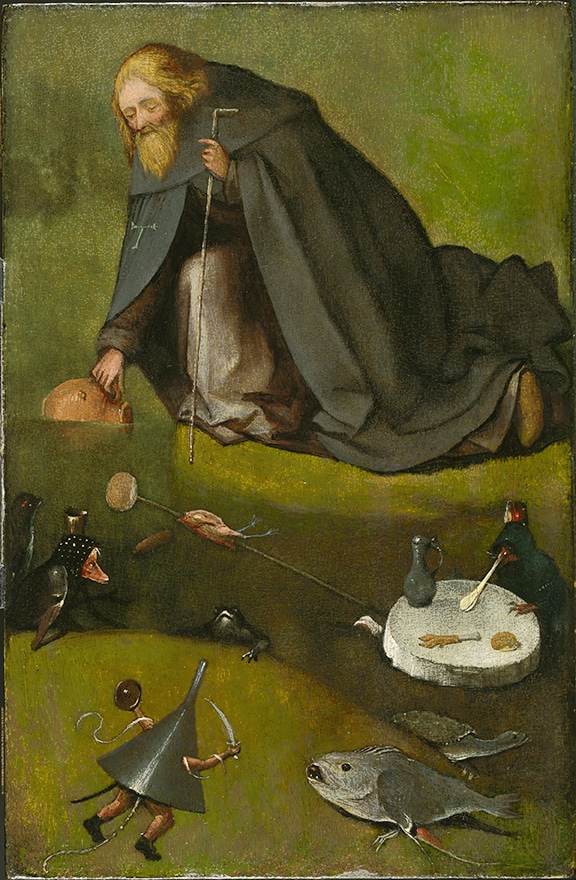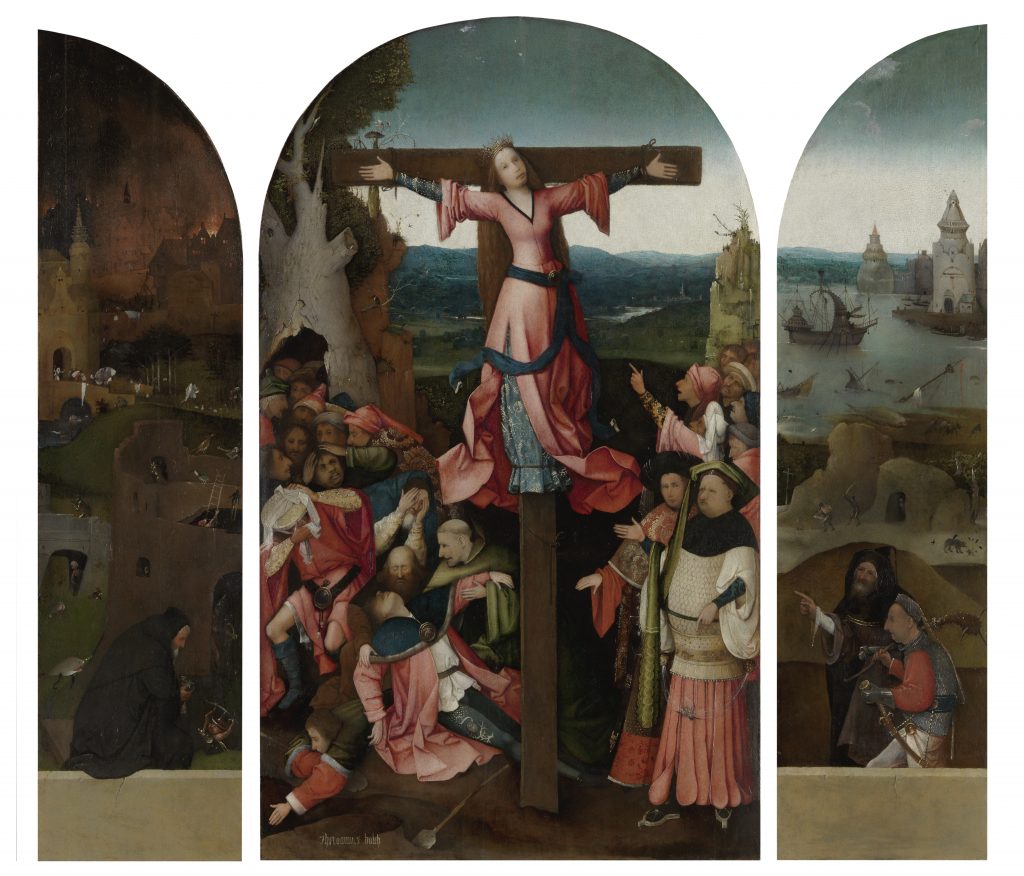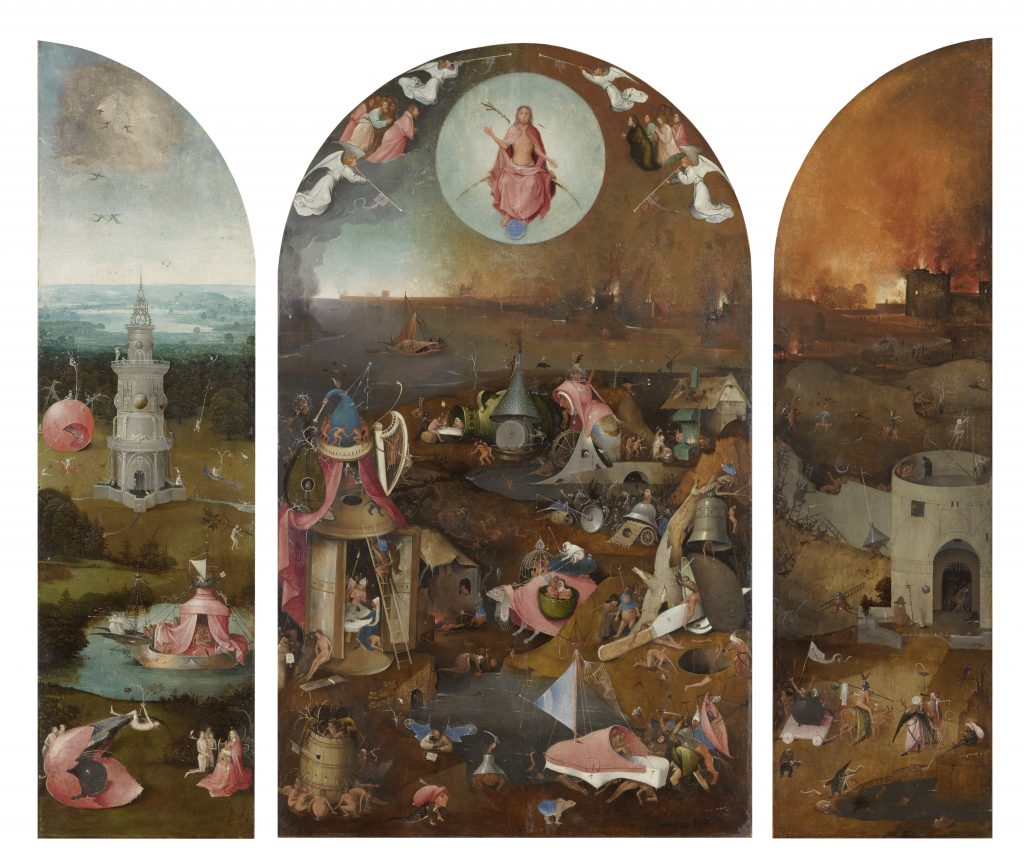Hieronymus Bosch is back. With a special exhibition in Den Bosch - in case anyone has forgotten - and with enormous attention. The exhibition is widely acclaimed and star-studded. It is already being called 'the exhibition of the year'. Newspapers were full of it, documentaries filled the TV screen and the opening was broadcast live. Five hundred years after his death, 'devil's advocate' Hieronymus Bosch is still alive and kicking. But why does everyone want to go there, why are crowding around his paintings? And are these twenty paintings and nineteen drawings, now back for three months in the city where Bosch once made them, so accessible and easy to understand?
What is known about the late medieval painter can easily fit on an A4 sheet. Hieronymus Bosch (about 1450-1516) was born Hieronymus van Aachen and later named himself after the city where he was born and where he lived and worked all his life. He was married to a wealthy woman, Aleid van de Meervenne. They had no children. During his lifetime, Hieronymus (as he signed his canvases since 1488) was already a famous and beloved painter. And he remained so.
A thousand books
In the centuries since his death, far more than a thousand books have been written about him. And this year a few more are being added. The autobiographical facts may have been quickly told, but his small bequeathed oeuvre gives rise to elaborate descriptions, explanations, myths and many riddles.

Incidentally, the number of works attributed to Bosch has recently shrunk slightly again, as the international Bosch Research and Conservation Project has identified two panels as 'from the workshop of Hieronymus Bosch' during its latest extensive and in-depth research. And thus not from the master himself. The Prado, which owns these two panels, was not at all happy with this outcome and subsequently decided - against agreement - not to lend the panels to the North Brabant Museum either. The Madrid museum does not want these works to be presented there as works by imitators or 'from the workshop of Hieronymus Bosch'. So Den Bosch got two less pieces on loan from Madrid. At the same time, the research team also added another work to its oeuvre, 'The Temptation of St Anthony', from The Nelson-Atkins Museum of Art in Kansas City. That has been flown over to the Netherlands. Nine of the panels hanging there have been beautifully restored for the occasion. Including the wondrous Wilge photographic triptych from Venice, showing a crucified woman with beard. A beard painted away over the years, but now clearly visible again.
Nightmare
It is not known how many paintings and drawings Hieronymus Bosch made in total. Not all works have stood the test of time. His remaining oeuvre now comprises 24 paintings and 20 drawings.
Bosch's work, which has come to Den Bosch from 10 different countries, is broadly presented. And it continues to amaze and intrigue. Hieronymus Bosch painted the nightmare of hell, luminous skies, monsters, devils, monstrosities. In short, all wondrous fantasies.

If you know nothing about Bosch, the whole exhibition may come across as a riddle. Why was and is he so beloved? What on earth did he paint? And since not everyone can immediately brush up on Christian iconography straight away, it is advisable to delve into Bosch prior to your visit. And especially in his time, the late Middle Ages. After all, five hundred years ago, actually the transition period from Middle Ages to Renaissance, people had a very different view of life than today. Christianity dominated daily life; God was central. The Bible had just been translated into Dutch and much was written about the Bible, Christianity and how to live. Paintings were also made to remind people who could not read that they themselves were responsible for moral choices in life. And to point out heaven, purgatory and hell. And by seeing this like this on altarpieces, people had to realise they were in control of their own salvation. This is what 'The narrator's ship', from the Louvre, is about, for example. Another top piece in the exhibition, 'The Hay Wagon' from the Prado (yes, it was allowed to come after all), is about greed, which can mean your downfall.
Hieronymus Bosch was also a religious man and 'sworn brother' of the Brotherhood of Our Lady in Den Bosch. He painted several altarpieces for the chapel of this group of believers in St John's.
Owl
It makes the museum visit more interesting if you know about Bosch's religious life. Because five hundred years ago, things could symbolise something very different from today. An owl, for example, which appears everywhere in Bosch's work, was not a symbol of wisdom 500 years ago; as a nocturnal animal, it symbolised the dark side of life. There was always a threat emanating from this animal.
Of course, the audio tour you can take at the exhibition is a great way to learn more about the painter and his time. But it is also nice to read about this prior to the visit. Highly recommended is the book 'Hieronymus Bosch. The painter of visions and nightmares' by art historian Nils Büttner. He explains very accessible who Bosch was, why he chose these subjects, what typified his era and who (as far as is known) his patrons were. Then it also becomes clear that although Bosch was part of the medieval tradition, he had a completely new visual language and was therefore an extremely modern painter for his time. Who was also immediately loved precisely because of his narrative style of painting, by the nobility and even at court.
The fact that even after five centuries, information is always missing and not everyone knows everything makes Hieronymus Bosch's work all the more intriguing. There is always something left to guess.
Droves
And so does everyone else. At the exhibition, the work is viewed intently. People stand in droves around the panels full of wondrous details, which actually demand to be looked at up close. And that is difficult at such a popular exhibition, for which more than 100,000 tickets have already been sold in the presale and many hours have already sold out. It is crowded around the paintings so you have to be patient to see all the details, all the monsters, devils, monstrosities and all the wonderful figures that just popped into that man's head. And even if you have seen everything, many mysteries linger. Enough to keep you thinking about for a long time.

'Hieronymus Bosch - Visions of a genius'. On view tm 8 May 2016 at the Noordbrabants Museum, 's-Hertogenbosch. Info: www.hnbm.nl. Composition: Dr Matthijs Ilsink, Prof Jos Koldeweij, Dr Charles de Mooij.
The exhibition and the exhibition catalogue of the same name (€24.95) are largely based on the results of the Bosch Research and Conservation Project. This international research project is an initiative of The North Brabant Museum, Radboud University Nijmegen and the Hieronymus Bosch 500 Foundation.
The exhibition is the highlight of the National Event Year of Hieronymus Bosch 500.
